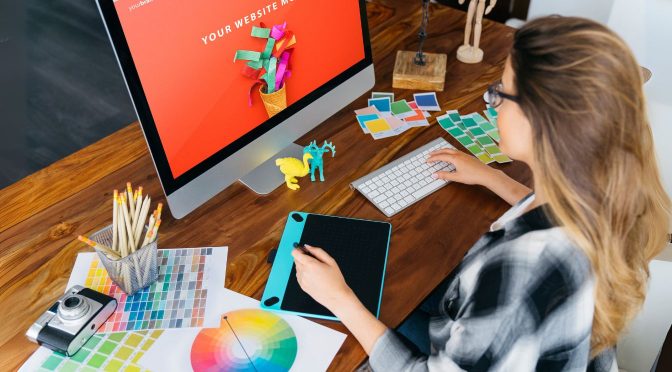Introduction: Creativity Is Evolving, Not Dying
The arrival of AI into the creative world has sparked both wonder and worry. Artists ask if machines will replace them. Writers fear that automation might dilute originality. Designers wonder whether their intuition still matters in a world of algorithms. I believe the real question is not whether AI will replace creativity, but how it will redefine it.
Creativity has always been shaped by tools. The printing press, the camera, the personal computer—all were once seen as threats to artistic purity. Yet, each helped creativity evolve. Artificial Intelligence is no different. It’s not killing creativity; it’s shifting the boundaries of what we can imagine, build, and express.
From Assistance to Co-Creation: What AI Really Does
Most AI tools in use today—ChatGPT, Midjourney, DALL·E, Runway, and Synthesia—don’t create independently. They recombine patterns from vast datasets, predict likely continuations, and execute instructions. That’s not imagination. It’s computation. But used wisely, these systems can accelerate and enhance the creative process.
For instance:
- Copywriters now use AI to generate multiple first drafts in seconds, freeing time for refinement and nuance.
- Graphic designers prototype faster with AI-generated concepts or variations.
- Musicians and sound designers explore entirely new sonic landscapes with AI-generated compositions or remixes.
- Film editors and animators cut production timelines with automated frame recognition and motion interpolation tools.
An Adobe survey found that 74% of creative professionals who use AI say it helps them focus more on high-value creative tasks rather than repetitive chores.
The narrative is shifting—from AI replacing creatives to AI collaborating with them.
The Myth of “Originality” and the Power of Prompt Engineering
Critics often say AI-generated art isn’t “original.” But let’s be honest: no creativity happens in a vacuum. Human artists also draw from references, trends, mentors, and the cultural context around them. What makes something original isn’t the source—it’s the synthesis.
The same goes for AI. A generative model responds to a prompt. The art lies in how that prompt is crafted. It’s why “prompt engineering” is now a legitimate creative discipline. The better you understand language, style, context, and tone, the better the output.
In a way, AI is elevating the importance of human judgment in the creative loop.
The machine offers possibilities. The human picks the path.
AI as a Creative Partner, Not a Replacement
AI can already produce blog outlines, marketing visuals, email copy, jingles, UX mockups, and ad variations. But can it feel? Can it surprise? Can it sense cultural nuances or read between emotional lines? Not quite.
Human creativity isn’t just about output. It’s about empathy, insight, storytelling, and the magic of the unexpected. AI helps scale that magic—but doesn’t generate it on its own.
A compelling example is Heinz’s “Draw Ketchup” campaign. Using DALL·E 2, they asked AI to generate images based on the phrase “ketchup.” Most of them resembled Heinz bottles—proving the power of brand association, not AI creativity.
In short, AI becomes a partner, a mirror, a muse—not a replacement.
Industries Already Seeing AI-Creativity Synergy
Let’s take a quick industry tour:
1. Marketing & Advertising
Brands like Coca-Cola and Nike use AI tools to generate concepts, localize campaigns, and A/B test thousands of ad combinations in minutes.
2. Film & Animation
Studios now use AI for scene stitching, de-aging actors, or creating realistic crowd scenes without hiring extras. AI also predicts audience reactions during test screenings.
3. Product Design
From car prototypes to UX wireframes, generative design tools allow product teams to rapidly test structural ideas that meet both function and form.
4. Publishing
AI is helping editors scan manuscripts for structural flaws, tone inconsistencies, or market-fit analysis, especially in digital publishing and self-publishing spaces.
And yet, in all these cases, the creative direction still lies with humans.
The Real Bottlenecks: Mindset, Skills, and Fear
Despite the rise of AI in creative industries, adoption still faces resistance, especially in small and medium enterprises.
Some common blockers:
- “Our team isn’t technical enough.”
- “AI will dilute our brand’s voice.”
- “We don’t want to sound like everyone else.”
These are valid fears. But they’re also solvable.
Solution: Upskill with Context
Train teams not just in using AI tools, but in when to use them. Creativity doesn’t start with a button click. It starts with curiosity, observation, and purpose. AI is simply the amplifier.
Looking Ahead: Redefining Human Creativity
The future of creativity isn’t machine-made—it’s machine-augmented. Think of AI as a ladder, not an escalator. It won’t carry you to the top, but it gives you a boost.
What we need is a new definition of creative work—one that celebrates:
- Strategic ideation over manual execution
- Collaboration over control
- Possibility thinking over fear
As businesses, creators, and educators, we must teach teams not just how to use AI, but how to think with it.
Final Thought: Creativity is More Human Than Ever
In a world full of AI-generated content, what will stand out isn’t perfect grammar or pixel-perfect design, but authenticity, empathy, and vision.
As someone who’s worked with brands at the intersection of digital marketing and technological change, I see this moment not as a threat, but as an invitation.
Let’s not fear what machines can do. Let’s be excited by what we can do with them.
Want to explore how AI can support your creative process or brand vision?
Let’s connect. I’d love to share ideas, tools, and perspectives that fit your unique context.




